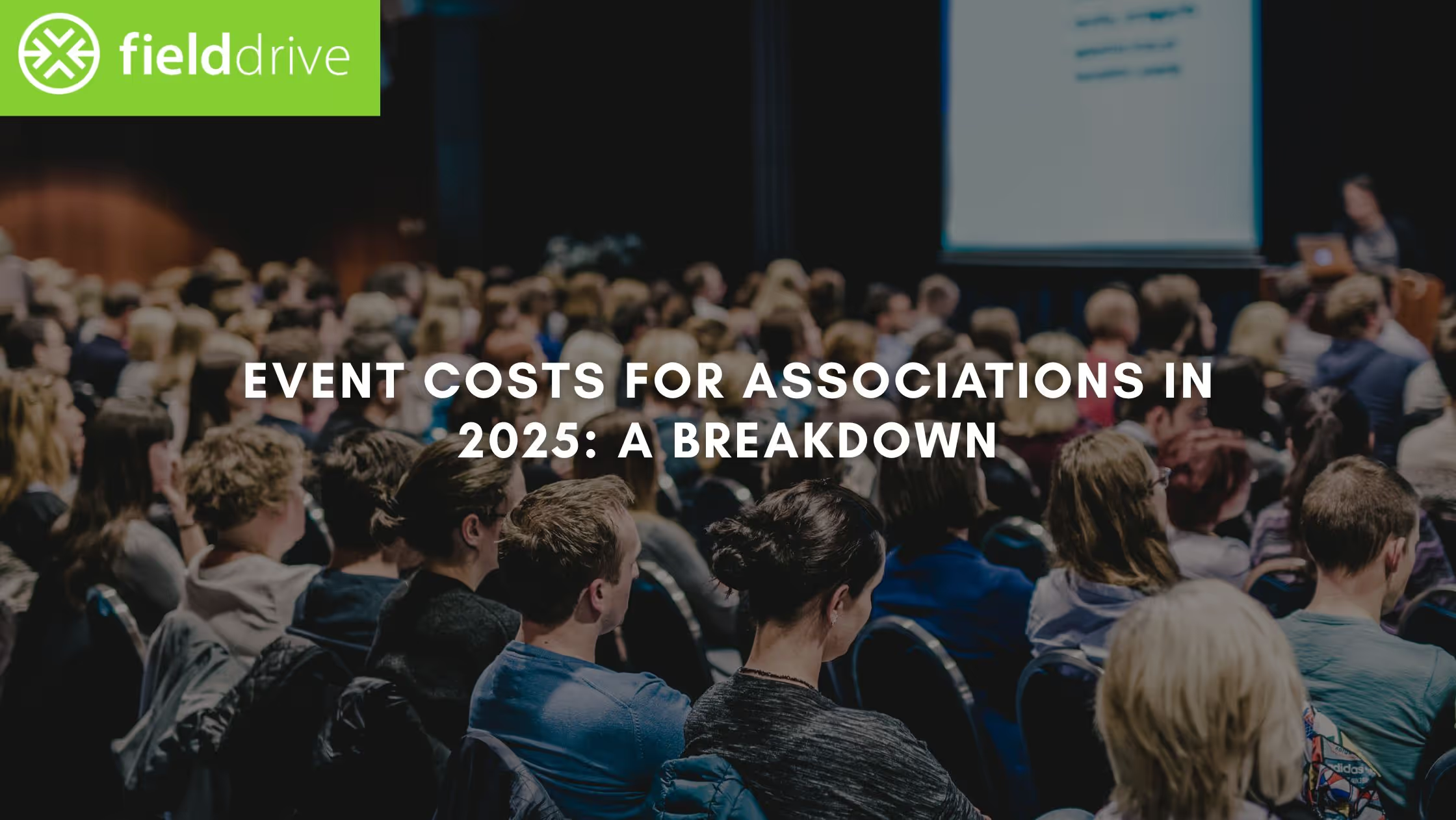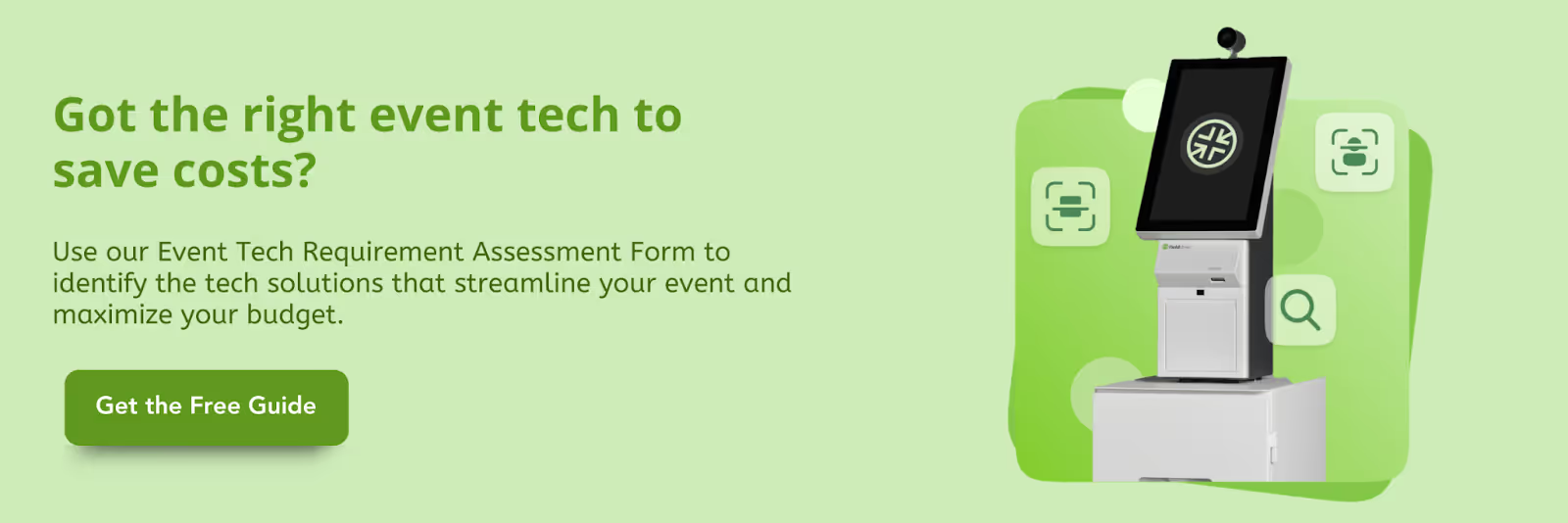How Expensive Is It for Associations to Host Events: A Cost Breakdown for 2025
Curious about how expensive it is for associations to host events? This guide covers cost breakdowns, budgeting tips, and key factors that influence event pricing in 2025.

CONTENT
One of the biggest challenges associations face today is managing the ever-growing costs of hosting events. From conferences to seminars, the expenses seem to multiply with every decision you make, whether it’s securing a venue, coordinating catering, or investing in technology. For many associations, this financial burden can quickly spiral out of control, putting pressure on both the event’s quality and the organization’s bottom line.
Understanding what drives these costs, where hidden expenses lurk, and how to leverage smart strategies can make all the difference. This guide will break down the true cost of hosting events in 2025, highlight potential areas for savings, and provide practical tips for staying within budget while still delivering impactful, high-quality events.
TL;DR
- Understand the key cost categories for events, including venue, catering, technology, and staffing.
- Be aware of hidden costs, such as last-minute changes and unexpected tech upgrades.
- Utilize strategies such as on-demand printing and hybrid staffing to minimize costs.
- Negotiate long-term venue contracts to secure better deals.
- Use a sample budget template to plan and track event expenses effectively.
Average Cost to Host an Association Event in 2025
To manage your budget effectively, it’s crucial to understand the true costs of hosting association events. Factors like venue, technology, catering, and attendee engagement can quickly escalate costs. Here's a breakdown of what to expect for different event types:
At any scale, technology such as fielddrive’s facial recognition check-in solutions and on-demand badge printing can streamline operations and help reduce costs related to staff and manual processes, while ensuring a smooth attendee experience.
Now that we’ve established the average costs, it’s important to break down these expenses further to understand where your money is going. Let’s look at the key cost categories that make up your event budget.

Key Cost Categories for Association Events
Hosting an association event involves numerous cost factors. Each category plays a vital role in determining the overall budget. Here’s a breakdown of the most significant cost categories in event planning:
1. Venue and Logistics (30–50%)
The venue is often the largest expense for any event. The cost depends on the event size, location, and the amenities provided by the venue. Here's a deeper look at the various elements that make up this cost category:
- Venue Rental:
- Small venues or meeting rooms: $1,000–$5,000
- Large venues or ballrooms: $10,000–$50,000+
- Audiovisual Equipment (A/V): Costs range from $2,000 to $10,000, depending on the scale of the event.
- Power and Internet: Typically, $1,000 to $5,000 for high-bandwidth needs.
- Staging and Decor: For elaborate setups, the cost ranges from $3,000 to $15,000, depending on the complexity.
- Transportation and Parking:
- Transportation: $1,000 to $5,000
- Parking: $500 to $3,000, especially in busy venues.
Total Estimated Cost: $12,000–$85,000+
2. Catering and Food & Beverage (20–30%)
Food and beverage services can significantly impact the attendee experience and the overall success of the event. The cost of catering includes not only the meals but also service charges, taxes, and gratuity.
- Coffee Breaks: $5–$15 per person for light refreshments.
- Lunches: $20–$50 per person for full meals, buffet-style or plated.
- Dinners and Galas: $50–$150 per person for plated or high-end meals.
- Beverages: $10–$30 per person for drinks, including alcoholic options.
Total Estimated Cost: $10,000–$60,000+
3. Technology (10–20%)
Technology plays a crucial role in modern events, from registration to attendee engagement and beyond. While necessary, tech expenses can quickly add up.
- Registration Platforms: $1,000–$5,000, depending on the platform complexity and the number of attendees.
- Badge Printing: $500–$3,000, depending on volume and customization.
- Check-in Kiosks: $2,000–$10,000, depending on features like facial recognition.
- Event Apps: $3,000–$15,000 for custom apps featuring agendas and networking tools.
Total Estimated Cost: $6,500–$33,000+
4. Marketing and Promotion (5–15%)
Marketing is key to driving attendance and attracting sponsors, but it doesn’t come cheap. Here’s where you might allocate your marketing budget:
- Email Campaigns: $500–$2,000, depending on complexity.
- Website Development: $2,000–$5,000 for simple sites, $10,000+ for custom registration sites.
- Social Media and Ads: $1,000–$5,000 for paid campaigns on platforms like Facebook and Google Ads.
- Print Materials: $1,000–$5,000 for brochures, banners, and programs.
Total Estimated Cost: $4,500–$22,000+
5. Speaker Fees and Travel (5–15%)
Inviting industry-leading speakers adds tremendous value to your event, but it also comes with costs. Fees vary based on the speaker’s reputation and travel requirements:
- Speaker Honorariums: $2,000–$10,000, with higher honorariums for high-profile speakers.
- Travel and Accommodation: $1,000–$5,000 per speaker, including flights and accommodations.
- Per Diem: $100–$300 per day for meals and incidentals.
Total Estimated Cost: $3,100–$15,300+
6. Staffing and Volunteers (5–10%)
Efficient event execution relies on having enough staff and volunteers to manage operations:
- Event Coordinators: $2,000–$8,000 for short-term projects.
- Onsite Staff: $1,000–$5,000 for registration, security, or attendee help.
- Volunteers: $500–$2,000 for meals, stipends, or reimbursements.
Total Estimated Cost: $3,500–$15,000+
With a clear understanding of the primary cost categories, it’s also essential to be aware of hidden expenses that can sneak up on you. Let’s explore some of the most common unforeseen costs that could impact your budget.
Hidden Costs to Watch Out For
For associations, event planning can feel like a balancing act—carefully managing your budget while avoiding surprise expenses. Hidden costs often sneak up on you and eat into your resources. Let's break down these costs so you can plan smarter and avoid unwanted financial strain.
- Printing and Reprinting Badges: Even minor mistakes or last-minute changes in your attendee list can result in costly reprints. These costs add up fast.
- Tip: Use on-demand badge printing to save on reprints and reduce unnecessary waste.

- No-Shows and Over-Catering: No-shows leave you with excess food and drinks that can't be used. This leads to unnecessary waste and financial losses.
- Tip: Set clear RSVP deadlines and use tracking tools to prevent over-ordering and reduce waste.
- Walk-Ins and Last-Minute Changes: Walk-ins create additional logistical costs. You’ll need extra badges, catering, and potentially more staff.
- Tip: Encourage pre-registration and set a premium for walk-ins to help manage additional costs.
- Wi-Fi Overages or Rushed A/V Add-Ons: Venues often offer basic tech packages, but these may not suffice for your needs. Last-minute upgrades can get expensive.
- Tip: Lock in your A/V and Wi-Fi needs early to avoid costly upgrades and ensure smooth tech operations.
- Vendor Fees, Insurance, and Post-Event Costs: Last-minute vendor changes, overlooked insurance fees, and follow-up costs can significantly impact your budget.
- Tip: Always factor in post-event costs, and keep a 10-15% contingency buffer for unexpected expenses.
- Last-Minute Vendor Fees: Many event vendors, such as florists, decorators, and photographers, may charge premium rates for last-minute requests or changes.
- Tip: Always plan ahead and secure your vendors as early as possible to lock in competitive prices.
- Insurance Costs: While often overlooked, event insurance can add an unexpected cost.
- Tip: Compare providers and secure necessary coverage early to avoid last-minute premiums.
- Post-Event Costs: Don’t forget to account for follow-up costs, such as thank-you emails, survey platforms, or shipping costs for event materials.
- Tip: Set aside a small budget for follow-up tasks, such as surveys and shipping, to avoid unexpected expenses.
While unexpected costs are unavoidable, there are strategies you can implement to minimize these financial surprises. Next, let’s explore some practical tips for cutting costs without compromising the quality of your event.
Also Read: How to Create a Post-Event Report That Proves ROI (With Templates & Examples
While unexpected costs are unavoidable, there are strategies you can implement to minimize these financial surprises. Next, let’s explore some practical tips for cutting costs without compromising the quality of your event.
Budget-Saving Tips Without Cutting Impact
By strategically optimizing your budget, associations can deliver exceptional attendee experiences without overspending. Here are several budget-saving tips that will help you reduce costs without compromising the success of your event.
- Use On-Demand Printing: Avoid waste and save on labor by printing only what's necessary, like badges and materials.
- Tip: On-demand printing, such as fielddrive’s live printing kiosks, reduces reprints, saves material costs, and streamlines check-ins
- Hybrid Staff + Tech Model: Combining volunteers with tech tools reduces the need for large teams and optimizes resource use.
- Tip: Utilize fielddrive’s self-service kiosks for registration, enabling volunteers to focus on key tasks and reducing staffing requirements.
- Negotiate Multi-Year Venue Contracts: Locking in venue contracts for multiple years provides stability and better pricing over time.
- Tip: A 2-3 year venue contract can save up to 30%, securing predictable pricing and perks like free parking or discounted A/V services.
- Bundle Sponsor Packages with Digital Activations: Offer sponsors valuable exposure through digital activations to avoid the high cost of physical setups.
- Tip: Bundle virtual booths and interactive event app features into sponsor packages, offering great visibility without inflating costs.
Also Read: 10 Powerful Sponsor Benefits & Ideas for Virtual Events in 2025
Implementing these cost-saving strategies can significantly impact your event’s bottom line. To help with your planning, here’s a sample budget template that you can use as a guide for your next event.
Smart Budget Template
Here’s a smart budget template you can use to guide your event planning process. This template will help you estimate costs based on typical expense categories, allowing you to adjust and monitor your spending easily.
.avif)
Conclusion
When it comes to hosting association events, the goal isn’t to trim costs at the expense of quality. It's to budget smarter, ensuring your event delivers maximum value without unnecessary financial strain. By understanding the key cost drivers and knowing where to optimize, you can run impactful events that achieve your association’s objectives without exceeding your budget.
From choosing the right venue and catering options to leveraging technology like fielddrive’s fast, on-demand check-in solutions, every decision plays a crucial role in managing your expenses.
Want a check-in solution that fits your budget and scales with your event? Book a demo to know how fielddrive can help streamline your event operations, reduce costs, and ensure a smooth, hassle-free experience for all attendees.
FAQs
1. What are the main cost factors when hosting an association event?
The key cost factors include venue rental, catering, technology, speaker fees, and staffing. Managing these expenses effectively ensures your event stays within budget without sacrificing quality.
2. How can we reduce technology costs for association events?
Using self-check-in kiosks and on-demand printing can reduce the need for additional staff and minimize material waste. Investing in an event management platform can streamline several processes and lower overall expenses.
3. What are some ways to save on staffing for association events?
Volunteers can help with registration and event logistics, reducing the need for paid staff. Leveraging technology for check-ins and management tasks can further minimize staffing requirements.
4. What’s the best way to estimate the total cost of an event?
Estimate the total cost by breaking down major categories, such as venue, catering, and technology. Add a contingency fund (10-15%) to cover unforeseen expenses and stay on track.
5. How can we avoid unexpected cost increases?
Secure vendor contracts and confirm attendee numbers well in advance to ensure prices are locked in. Track expenses throughout the planning process to spot potential overspending early on.
Want to learn how fielddrive can help you elevate your events?
Book a call with our experts today



.png)
.svg)
.svg)
.svg)

.svg)